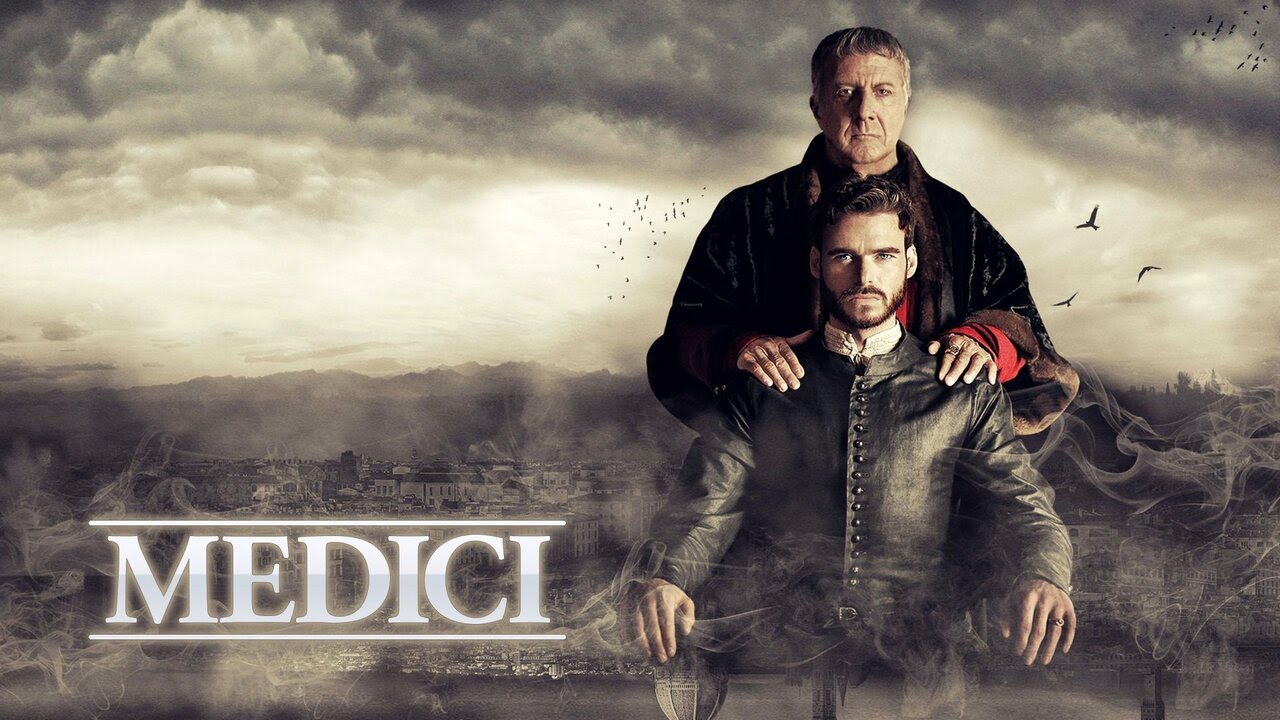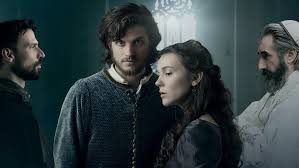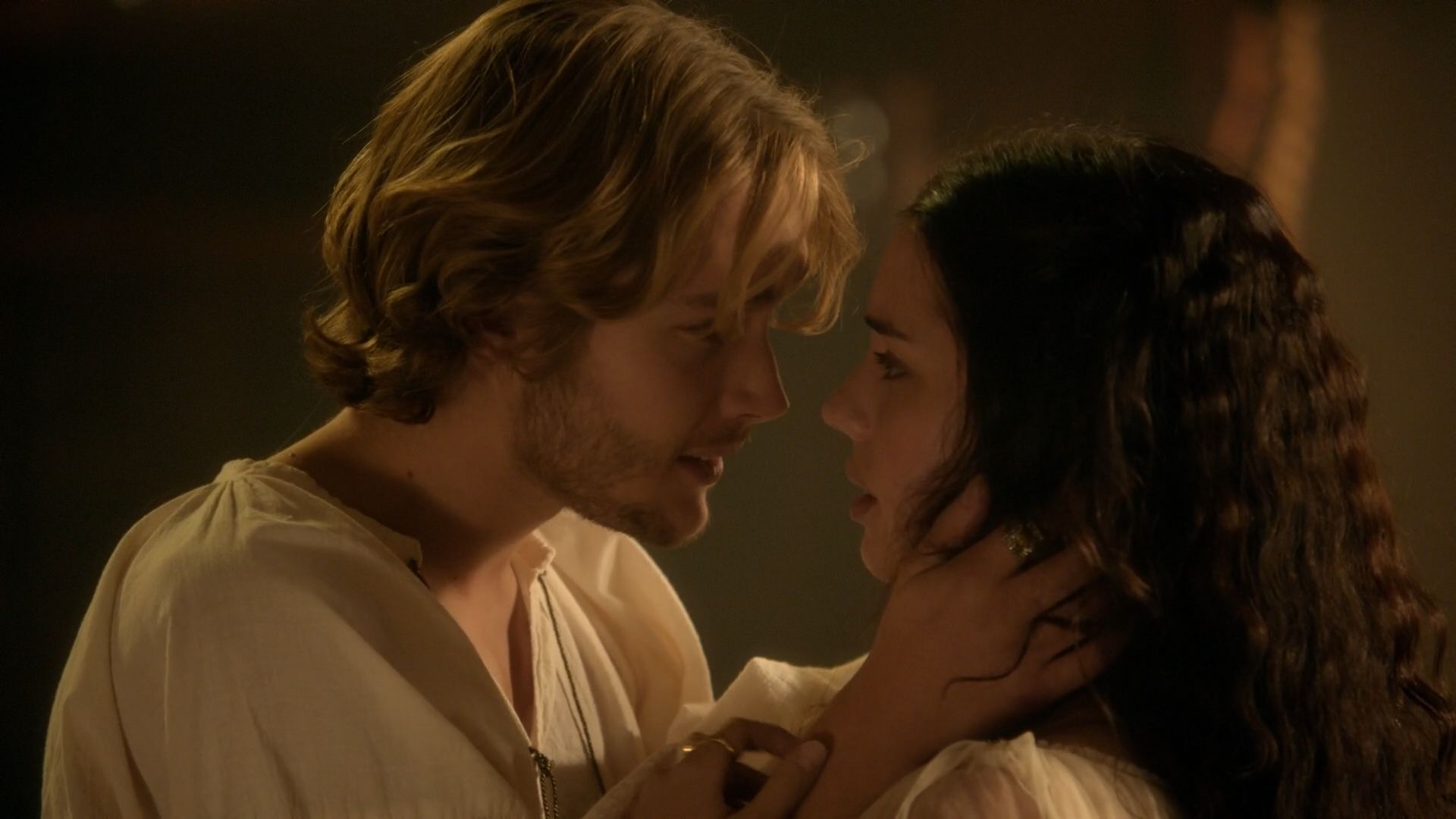🎬 MEDICI

Plot Overview
Medici spans three seasons, each tackling a distinct era of the Medici family’s legacy, set against the backdrop of 15th-century Florence—a city teetering between medieval tradition and Renaissance enlightenment. Season 1, Medici: Masters of Florence, begins in 1429 with the sudden death of Giovanni de’ Medici (Dustin Hoffman), the patriarch whose banking empire underpins the family’s power. His son, Cosimo (Richard Madden), inherits the reins, navigating a web of political intrigue and rival families like the Albizzi. The season unfolds as a mystery—Giovanni’s death is hinted to be murder, possibly by poison—while Cosimo balances his father’s ruthless pragmatism with his own artistic passions, sponsoring figures like Donatello and funding the Florence Cathedral’s dome. His arranged marriage to Contessina de’ Bardi (Annabel Scholey) adds personal tension, as he pines for a past love, Bianca, amid escalating conflicts that culminate in his exile and triumphant return.
Season 2, Medici: The Magnificent, leaps forward to 1469, focusing on Cosimo’s grandson, Lorenzo de’ Medici (Daniel Sharman). After surviving an assassination attempt by the rival Pazzi family—dramatized in the bloody Pazzi Conspiracy, where his brother Giuliano (Bradley James) is murdered in the cathedral—Lorenzo consolidates power with a mix of diplomacy and vengeance. The season explores his efforts to stabilize Florence’s bank amid war with Milan and the papacy, while his marriage to Clarice Orsini (Synnøve Karlsen) and his dalliance with Lucrezia Donati (Alessandra Mastronardi) weave romantic subplots. Lorenzo’s patronage of Botticelli and other artists underscores his cultural legacy, though his moral compromises darken his idealism.
Season 3 continues Lorenzo’s story into the 1480s, tracing his decline as he grapples with guilt over Giuliano’s death and the fallout of his vendetta against the Pazzi. Facing threats from Pope Sixtus IV (John Lynch) and his nephew Girolamo Riario (Jack Roth), Lorenzo’s health falters—mirroring his historical lupus—but his ambition drives Florence to new heights. His son Giovanni’s rise as a future pope and his mentorship of Michelangelo hint at the Medici’s enduring influence, though the season ends with Lorenzo’s death in 1492, leaving his legacy bittersweet as war looms.
The series, penned by Spotnitz, Meyer, and a rotating team, takes bold liberties with history—Giovanni’s murder is speculative, timelines are compressed, and characters like Lorenzo’s mistress are embellished—but it crafts a compelling saga of power, faith, and art. Across 24 episodes, it blends family drama with political thriller elements, though its episodic pacing can feel rushed, cramming decades into hours. The narrative prioritizes emotional stakes over historical precision, ending with a sense of cyclical triumph and tragedy as the Medici bank teeters, reflecting their real decline by the late 15th century.

Character Dynamics and Performances
The Medici family anchors the series, with each season spotlighting a new generation’s struggle to uphold their dynasty. In Season 1, Richard Madden’s Cosimo is a reluctant heir, his brooding intensity—familiar from Game of Thrones—tempered by a quiet yearning for beauty over brutality. Madden excels in moments of vulnerability, like his pained exchanges with Contessina, though his furrowed brow can feel one-note. Annabel Scholey’s Contessina steals scenes as a steely wife and mother, negotiating Cosimo’s exile and saving their home from ruin—her grit makes her a standout, despite historical liberties that amplify her agency. Dustin Hoffman’s Giovanni, though brief, is an odd fit—his Brooklyn-tinged accent jars against the period, and his stoic patriarch feels mailed-in, lacking the dynamism Hoffman typically brings.
Season 2 shifts to Daniel Sharman’s Lorenzo, a charismatic idealist hardened by betrayal. Sharman’s transformation from youthful dreamer to weary ruler is gripping—his anguish after Giuliano’s murder and his steely resolve against the Pazzi showcase his range. Bradley James’s Giuliano brings a rakish charm, his romance with Simonetta Vespucci (Matilda Anna Ingrid Lutz) a tragic highlight before his brutal end. Synnøve Karlsen’s Clarice evolves from a timid bride to a shrewd partner, her quiet strength balancing Lorenzo’s fire, while Alessandra Mastronardi’s Lucrezia Donati adds a sultry, conflicted mistress—though her arc feels more soap opera than substance.
Season 3 deepens Lorenzo’s complexity, with Sharman aging convincingly into a man consumed by legacy and loss. Sarah Parish’s Lucrezia Tornabuoni, Lorenzo’s mother, emerges as a layered matriarch—her faith and cunning anchor the family, especially as Lorenzo falters. Sean Bean’s Jacopo Pazzi, introduced in Season 2, is a snarling nemesis, his Season 3 demise a fittingly grim coda—Bean plays him with Ned Stark-esque gravitas, though less relish than the role might demand. Supporting players like Stuart Martin (Lorenzo the Elder), Guido Caprino (Marco Bello), and Sebastian de Souza (Botticelli) flesh out the world, their loyalty or betrayal shaping the Medici’s fate.
The ensemble thrives on tension—Cosimo and Contessina’s duty-bound marriage, Lorenzo’s fractured alliances with Clarice and the Pazzi, and the recurring clash of personal desire versus political necessity. Performances vary—British accents dominate despite the Italian setting, and some (Hoffman, Bean) feel miscast—but the core cast carries the drama, their chemistry breathing life into a script that occasionally leans on melodrama over nuance.

Direction and Visual Style
Miloš Forman’s One Flew Over the Cuckoo’s Nest—oops, wrong film! Medici is helmed by a rotating slate of directors, with Sergio Mimica-Gezzan leading Season 1, followed by Jon Cassar and others. The visual style, crafted by cinematographers like Vittorio Omodei Zorini, is a Renaissance painting come to life—Florence’s Duomo looms majestically, its half-built dome a recurring motif, while Palazzo Vecchio and Tuscan countryside shots (filmed on location) bathe the screen in golden light and earthy hues. Costumes by Alessandro Lai and Giulia Piersanti are sumptuous—velvet robes, intricate brocades—evoking wealth without flashiness, though their pristine condition stretches realism for the 15th century.
The direction leans on grandeur—wide shots of Florence’s skyline or battlefields contrast intimate, candlelit interiors where intrigue unfolds. Season 1’s pacing is methodical, lingering on Cosimo’s moral dilemmas, while Seasons 2 and 3 accelerate with action—swordfights, the Pazzi ambush, Lorenzo’s standoff with Milanese troops—shot with kinetic energy but rarely chaos. Flashbacks, especially in Season 1, weave past and present, though their frequency can disrupt flow. The camera favors close-ups—Cosimo’s furrowed brow, Lorenzo’s anguished eyes—amplifying emotional stakes, though it risks overemphasis on brooding.
Paolo Buonvino’s score, with its modern beats and Renaissance-inspired strings, is divisive—Season 1’s “Renaissance” (with Skin) pulses with anachronistic flair, while Seasons 2 and 3 shift to “Revolution Bones,” blending drama with pop excess. It’s loud, often drowning dialogue (a frequent viewer gripe), but undeniably atmospheric. Production design excels—sets like the Medici bank or the cathedral’s scaffolding feel lived-in, though CGI enhancements (battles, cityscapes) occasionally falter, showing the budget’s limits. The directors’ theatrical approach—operatic standoffs, sweeping pans—mirrors the Medici’s larger-than-life saga, though it can tip into soap-opera territory, especially in romantic subplots.

Overall Impact and Reception
Medici arrived as Netflix’s foray into Italian co-productions, debuting on Rai 1 in 2016 before streaming globally, reaching 190 countries via Netflix, SBS Australia, and others. It drew 4-8 million viewers per episode in Italy, a sleeper hit that grew into a modest international success—exact streaming numbers are undisclosed, but its three-season run suggests solid viewership. Critically, it’s polarizing: Season 1 holds a mixed reception (no Rotten Tomatoes score exists), praised for its lush visuals but panned for historical liberties—Giovanni’s murder is pure fiction—and stilted dialogue. Seasons 2 and 3, under The Magnificent banner, fare better, lauded for Sharman’s performance and tighter pacing, though critics still decry its soapiness (The Guardian called it “hysterical rather than historical”).
The series’ impact lies in its accessibility—it’s a gateway to Renaissance history for casual viewers, sparking interest in the Medici’s real exploits (their bank didn’t collapse until 1494, post-Lorenzo). Its blend of Game of Thrones-style intrigue and period drama won fans—posts on X laud its “cinematography like a painting”—but its anachronisms (English dialogue, modern music) and simplified women’s roles (Contessina’s power is exaggerated) irk purists. It’s not The Crown—lacking that show’s nuance—but it’s a glossy, bingeable romp that prioritizes entertainment over education.
For 2016-2019 audiences, Medici rode the wave of historical epics, offering escapism amid a gritty TV landscape. Its legacy is niche—underrated to some (IMDb user: “Gripping, highly underrated”), overhyped to others (another: “A soap opera in fancy capes”). It spawned no major awards but fueled tourism chatter about Florence and a rumored fourth season that never materialized. Flaws—uneven casting, loud music, historical fudging—don’t derail its appeal: a flawed, beautiful portrait of a family that shaped an era, told with more flair than fidelity.











